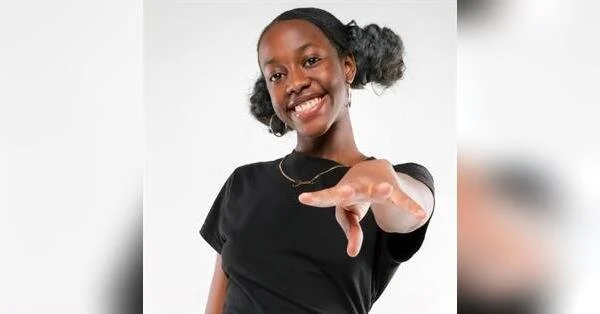Shania Kelis Green Killed at House Party in Grayson Georgia
In the early morning hours of December 29, 2023, a burst of gunfire cut through the winter quiet of Grayson, Georgia, and forever changed a family’s world. Inside a home where a gathering had drawn teens and young adults, 18-year-old Shania Kelis Green—daughter, friend, new mother—was struck by a stray bullet and fatally wounded. The circumstances were as senseless as they were devastating: a young woman, indoors, celebrating life with friends, suddenly caught in the path of violence that was neither meant for her nor invited into that space. This article reconstructs what is publicly known, explains how investigators typically approach cases like this, and reflects on the wider social, forensic, and ethical questions that a stray-bullet homicide forces a community to face.
Who Was Shania Kelis Green
Shania was, first and foremost, loved. Family members describe a young woman at the threshold of adulthood who was learning how to hold many roles at once: daughter and granddaughter; friend and confidante; and—most recently and proudly—mother. The word that comes up most often in reminiscences is “gentle”: gentle with younger cousins, gentle with friends who needed a listener, gentle with herself as she stumbled toward the balance that makes newly independent life so difficult and so exhilarating.
She had plans that extended beyond any given weekend. She wanted stability and a future for her infant son; she wanted to contribute, to earn, and to craft a routine that would sustain her family. Those plans were concrete and modest: a reliable schedule, a credential, a first apartment that felt like her own. None of these aspirations made headlines while she was alive, but they matter when telling her story, because they anchor who she was apart from the tragedy that took her life.
The Setting: Grayson, Georgia
Grayson sits in Gwinnett County, a rapidly growing suburban expanse northeast of Atlanta. It is a place of subdivisions and cul-de-sacs, Friday-night lights, small businesses, and a sense among many residents that the suburban compromise—longer commutes in exchange for quieter streets—is worth it. The neighborhood where the gathering took place is typical of the area: single-family homes with driveways and porches, neighbors who wave to each other, a street that looks like countless others. It is not the kind of place most people instinctively associate with gunfire in the middle of the night.
That incongruity is part of why the case rattled the community. When violence arrives in a space designed to keep it far away—when rounds fired somewhere outside pierce walls, windows, or roofs—people do not simply mourn; they re-evaluate. Where did the risk come from? How could it be controlled? What, if anything, could have been done differently?
December 29, 2023: The Final Hours
It was late, crossing into the earliest hours of Friday. The gathering—call it a party, a hangout, a get-together—had drawn a number of young people. Music, conversation, phones lighting up with photos and messages, laughter in bursts. The familiar script of youth and proximity played out in living rooms and kitchens and on porches. Then, a rupture: shots outside. Whether it was a dispute that escalated or indiscriminate celebratory gunfire, whether it came from a passing vehicle or people on foot—those are the specifics that investigators work to pin down. What is clear is that at least one round traveled into the home and struck Shania.
The minutes after a gunshot are a blur in any case, but especially in a crowded space. People drop, dive, scatter, freeze, or run toward the wounded. Someone calls 911. Someone else tries to stop bleeding with towels and hands. The body’s chemistry floods with adrenaline and time compresses; details get encoded sharply but not always accurately. Those details—where a person was standing, whether a door was open, which direction a sound seemed to come from—become the raw material that investigators must later test against physical evidence.
The Immediate Response
Emergency dispatchers fielded the call and routed police and medical responders to the scene. Officers arriving at a residence that had just experienced gunfire follow a choreography born of necessity: secure the area, determine if the shooter is still present, extract the wounded, and stabilize the scene for medical personnel. Inside, medics focused on airway, breathing, and circulation, working with speed and care. Despite extraordinary efforts, Shania did not survive.
Within minutes, the scene transformed from crisis to investigation. Crime scene tape went up. Officers established a perimeter and began to separate witnesses so their initial accounts could be recorded independently, reducing cross-contamination of details. Detectives were notified and made their way to the residence to begin the work that would stretch into months.
Establishing the Primary Scene and Trajectory
In a shooting that originates outside and injures someone inside, one of the first technical tasks is establishing ballistic trajectory. Investigators examine entry points—glass, drywall, wood frames, blinds—and look for clean perforations, ricochet marks, and spall (tiny fragments shed by materials). A laser or string can be used to extend the line of travel backward through space. If multiple rounds entered the home, each gets its own trajectory analysis.
The path of a bullet tells a story about where a shooter likely stood or drove, how high the muzzle was, and whether the rounds were fired horizontally, upward, or downward. It can also reveal whether the shooter was moving when shots were fired. If a projectile is recovered, the lab examines rifling impressions (lands and grooves) to determine class characteristics and, if the firearm is later recovered, to attempt a match. If the projectile cannot be found, secondary clues—like impact angles and the distribution of glass shards—still provide valuable direction.
Witness Interviews and the Information Gradient
In a crowded social setting, nearly everyone has a vantage point and nearly no one has the full picture. Detectives triage interviews: those who were nearest to the point of entry are asked to describe what they saw, heard, and felt; those outside or on the porch become crucial for identifying vehicles, clothing, arguments, or faces. Investigators probe for connections: Who hosted? Who invited whom? Did anyone have a conflict earlier in the evening? Was there a person ejected from the gathering? Were there social-media posts suggesting a brewing dispute?
An information gradient develops: some accounts are detailed and consistent; others are fragmentary or contradictory; still others are colored by fear of retaliation. Detectives recognize these patterns and work patiently to reconcile them with physical evidence, phone data, and surveillance footage.
Digital Forensics and the Hunt for Video
In modern investigations, the immediate circle of inquiry expands to include digital doorbells, home security cameras, vehicle dashcams, and nearby commercial CCTV systems. Even when a street seems residential and quiet, it may be laced with cameras whose fields of view overlap. Investigators canvas the area to capture footage before it is overwritten—sometimes within days. A passing car’s make and model can be inferred from headlight signatures and silhouettes; a distinctive wheel, bumper scrape, or decal can become the thread that unravels anonymity.
Phones also matter. If any attendee filmed parts of the evening, those clips may inadvertently capture context—who arrived with whom, what time a cluster formed outside, the presence of an unfamiliar vehicle looping the block. Even without explicit video of the shooting, these fragments can build a timeline accurate enough to intersect with other data sources.
The Forensic Lab’s Role
Once physical evidence is collected—projectiles, bullet fragments, casings found outside, glass shards, fibers—the lab’s clock starts. Microscopy, ballistics comparison, and trace analysis each run on their own timelines. If casings are recovered outside, their firing pin and breechface impressions are entered into a national database to see if they link to other shootings. If a projectile is intact enough to yield class and individual characteristics, analysts record them for potential future matches.
In a stray-bullet case, DNA and fingerprints may be scarce inside the home unless the shooter entered, touched surfaces, or left something behind. That amplifies the importance of scene reconstruction, witness accounts, and video triangulation.
The Emotional Landscape for Family and Friends
For Shania’s loved ones, the immediate aftermath fused disbelief and fury. Grief of this kind has a specific shape: the closer one gets to the fact that the bullet was not “meant” for the victim, the more senseless the loss feels. There is no neat legal term for that feeling; “homicide” captures the category, not the human texture. Families in such cases also navigate a series of indignities: rumors that ricochet through social media, hints of blame or what-ifs, the logistics of funerals and fundraisers, the silent spaces of a home now missing a person. And for a young mother’s family, there is, in addition to mourning, the practical and profound question of how to raise a child who will grow up without the parent lost.
Community Impact and the Shock of Proximity
Stray-bullet deaths are uniquely destabilizing to a community because they collapse the distance between “out there” and “in here.” A sealed window becomes porous; a wall becomes penetrable. Neighbors who once felt insulated by geography or architecture recalibrate their sense of safety. The response is rarely uniform. Some call for more patrols and cameras; others focus on youth outreach, de-escalation, and conflict-interruption programs; still others emphasize the importance of tightening the social fabric—knowing names, exchanging numbers, and noticing patterns before they worsen.
The Unsolved Stage: What It Means and What It Doesn’t
When a case remains unsolved, it does not mean it is unworked. It means the puzzle lacks enough confirmed pieces to cross the threshold that a prosecutor needs for court. Detectives continue to sift tips, check new incidents against old patterns, and wait for technology, human error, or conscience to open a door. Guns get recovered in unrelated arrests; when they do, test fires are run and compared to open cases. People’s loyalties shift; arguments fracture; someone who stayed silent for a year decides to talk. Time, while cruel to memory, is often a friend to truth.
Why Witnesses Matter So Much
There is a hard reality in shootings connected to gatherings: the people best positioned to know what happened are often the ones least comfortable speaking to authorities. Fear of retaliation is not theoretical. That is why programs that allow for confidential or anonymous tips, coupled with community leaders who can serve as trusted intermediaries, are so important. A single detail—“it was a dark sedan with a primer-gray front fender,” or “the driver wore a bright beanie and had a chipped tooth”—can be the missing piece that converts a hazy lead into a surge of investigative momentum.
Patterns and Context: Understanding Stray-Bullet Violence
Stray-bullet fatalities tend to occur in a handful of scenarios: disputes that erupt into gunfire in public or semi-public spaces; shots fired from vehicles during drive-bys or chaotic departures; and occasional instances of reckless celebratory gunfire. The tragic constant is that projectiles travel farther and straighter than their shooters imagine. A round that leaves a barrel at high velocity does not recognize intent; it recognizes physics. Dense suburban environments—closely spaced houses, multiple roads, open sightlines down long streets—are especially vulnerable when even a single person decides that conflict resolution requires a weapon.
What Law Enforcement Needs from the Public
Investigators often ask for three categories of help. First, presence: if you were there, they need to know, even if you believe you saw nothing. Your location, time of arrival, and departure help draw the crowd’s shape. Second, detail: anything unusual—a car circling twice, a person arriving breathless, a snippet of overheard argument—can matter. Third, evidence: photos, short videos, or social-media posts captured before or after the moment of violence are time-stamped anchors in a fluid narrative.
Ethical Storytelling and Respect for the Victim
When writing about a case like Shania’s, it is easy to fall into either sensationalism or abstraction. The first harms dignity; the second erases a person’s life into a talk-radio topic. Responsible storytelling lives in the middle: clear about the facts, cautious with speculation, firm about the victim’s humanity, and attentive to the family’s ongoing grief. Shania’s name should be associated not only with the tragedy of a bullet’s path but also with the warmth she gave, the child she loved, and the future she deserved.
Practical Safety Considerations Without Blame
No set of actions can guarantee safety in a world where others may choose violence. Still, there are practical measures that communities and households sometimes consider after incidents like this: improving exterior lighting and camera coverage; coordinating with neighbors to understand typical traffic patterns; encouraging hosts to keep guest lists manageable and to have clear plans for diffusing disputes; and—most importantly—building relationships so that people feel accountable to one another. None of these are silver bullets; they are threads in a wider net of care.
The Long Tail of Justice
Justice in a homicide case arrives in layers. The first layer is the truth: what happened, who did it, and why. The second is accountability: an arrest, a charge, a conviction that is supported by evidence and process. The third is healing: an evolving, never fully finished work within families and communities to integrate loss into the story of a life that was loved. In an unsolved case, the first two layers are incomplete. But the third does not wait for court. It begins when people gather in living rooms and sanctuaries to speak a name with tenderness and insist that a life mattered.
What Makes This Case So Hard—and So Solvable
Stray-bullet cases are challenging because they sometimes lack the direct links that make other investigations move quickly: a suspect known to the victim, a clear dispute inside the home, physical transfer evidence left by an intruder. But they are also solvable because gun violence tends to produce footprints even when people intend anonymity: casings left at the discharge site, unique ballistics signatures, vehicle sightings, overheard words, and injuries or bruises that leak into a social circle. Many cases turn not on a dramatic confession but on the quiet accumulation of small corroborations.
Shania’s Legacy
Legacies are made not only by what people accomplish but by the communities they inspire to act in their names. In the months after her death, friends and family organized remembrances and spoke to her character: her softness, her humor, her loyalty to those she loved, the protective energy she poured into her son. These acts of remembrance are not just personal; they are civic. They insist that the measure of a community is how fiercely it refuses to normalize the loss of young people to preventable violence.
A Call to Conscience
Somewhere, someone knows a piece of this story that has not yet reached investigators. Conscience is heavy. It can be made lighter by acting. Sharing what you know does not undo harm, but it can prevent more, and it can honor the life already taken. One of the hardest truths about gun violence is that it is a public problem with private gateways: dozens of personal actions—choosing not to carry, choosing to walk away, choosing to speak—aggregate into communal safety.
Conclusion
On December 29, 2023, in Grayson, Georgia, a bullet found its way into a home and ended the life of 18-year-old Shania Kelis Green. That fact is stark and shattering. But it is not the sum of her story. She was a mother, a daughter, a friend, and a young woman standing at the edge of adulthood with plans that were simple and beautiful. The investigation into her death, like all careful police work, runs on patience, evidence, and the willingness of people to share what they know. While the case remains unresolved, it is not unremembered and not unpursued. For Shania’s family and for a community that will not accept the idea that such losses are inevitable, the work continues: to learn, to speak, to build the conditions under which another stray bullet finds no target, and another family is spared a grief that never ends.
Discover more from City Towner
Subscribe to get the latest posts sent to your email.




